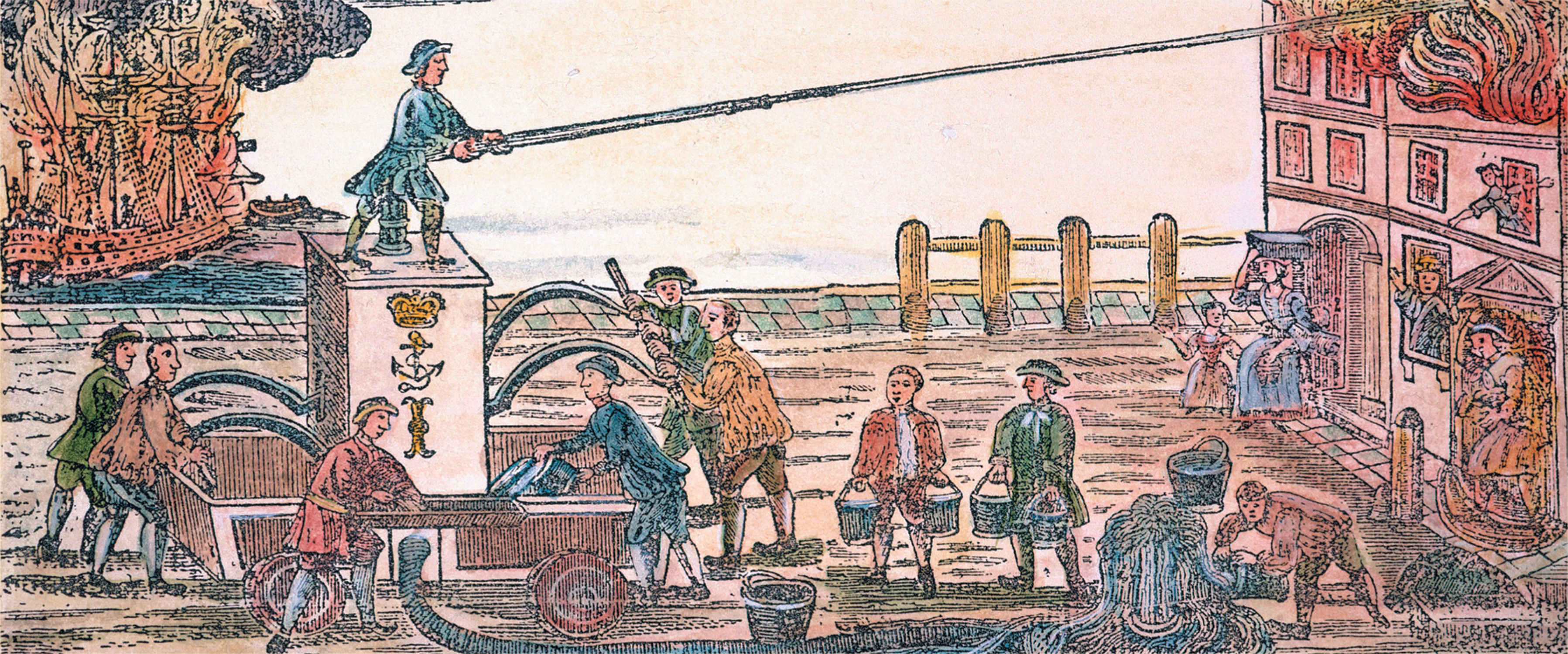The American Promise:
Printed Page 148
Chapter Chronology
SEEKING THE AMERICAN PROMISE
Pursuing Liberty, Protesting Tyranny
In August 1765, a little-known Boston shoemaker gained sudden prominence as the leader of crowd actions opposing the Stamp Act. Ebenezer Mackintosh boldly encouraged thousands of ordinary men in Massachusetts to assert a claim to liberty against what they identified as British tyranny. Mackintosh’s story offers a glimpse into the political thinking of the man in the street during the decade of pre-Revolutionary turmoil. By 1776, this quest for liberty would be a defining feature of the fledgling United States.
Born in poverty in 1737, Ebenezer Mackintosh lacked family resources to ease his way in the world. His ancestors arrived in the Puritan migration of the 1630s; a century later, his family was quite poor. Ebenezer’s father, an orphan, struggled against bad fortune. He owned no land and lacked a trade; he married and buried wives at least three times. The best he could do for young Ebenezer was to apprentice him to a shoemaker. During the Seven Years’ War, Ebenezer joined the army to secure a signing bonus. He saw brief action and returned to Boston in 1758 to resume shoemaking. He was twenty-one.
A major fire in Boston in 1760 marked a dramatic change in direction for Mackintosh. In the aftermath of the fire, the city looked to young, able-bodied men to reinvigorate its volunteer fire companies and picked Ebenezer to join a select firemen’s association in the city’s South End. Fighting fires demonstrated one’s sense of civic duty and manly responsibility. Fire clubs also generated fraternal sociability, with firemen regularly meeting in taverns over pitchers of beer, cementing the team spirit so critical to successful firefighting. Mackintosh proved to be a leader of men in times of emergency; he soon became head of the South End gang, which staged a mock battle once a year against the rival North End gang. In this traditional street festival, Mackintosh gained direct experience managing rowdy crowds.

Mackintosh the Fireman Skilled Boston firemen tapped water from underground water mains made from hollowed logs and pumped it vigorously by hand to douse fires. Demolition to halt the spread of fires was also essential work. Mackintosh’s fire-control skills transferred easily to anti–Stamp Act actions, whether burning effigies and small buildings or pulling down Hutchinson’s house. The Granger Collection, New York.
Expertise in fire and crowd control paved the way for Mackintosh’s transition from community leader to community activist in 1765. Stamp Act protests erupted twice in August of that year. In the first event, Mackintosh presided over the mock hanging of a dummy representing Andrew Oliver, the stamp distributor, at a century-old elm tree known as the Liberty Tree. The shoemaker led several thousand protesters in a march on the new stamp office, which was pulled down and burned. Twelve days later, a smaller but far more destructive demonstration almost certainly led by Mackintosh demolished the mansion of Governor Thomas Hutchinson. Hutchinson ordered Mackintosh arrested, but no witnesses cared to identify him. Hours later, the sheriff—a member of Mackintosh’s fire company—released him, predicting worse trouble if he was kept in jail.
The shoemaker continued to lead large demonstrations in November and December, forcing Andrew Oliver to repudiate his stamp distributor duties. Ordinary people like Mackintosh exerted a new authority and confidence, commanding their social betters to do their bidding.
In 1766, the Stamp Act was repealed, and Mackintosh went back to shoemaking. He married Elizabeth Maverick and had two children by 1769. Perhaps he took a break from activism; no record links him to protest activities when British troops came to town in 1769–1770, nor was his presence recorded at the Boston Massacre in March 1770. In 1773, he was apparently back at it, bragging later in life that he helped throw tea into Boston harbor.
A well-publicized rumor spread in 1774 that a ship en route from London carried official orders to arrest four rebellious subjects, most notably Samuel Adams and Mackintosh. Adams stayed put, but Mackintosh, still lacking resources and at a low moment in life—his young wife had recently died—decided that flight was his best option. Carrying his two young children and his meager belongings, he walked 150 miles to a village in northern New Hampshire, where he set up shop as a shoemaker. He served locally and briefly as a soldier in the Revolution and then remarried and fathered four more children.
An especially telling clue to Mackintosh’s idealization of liberty appears in the unusual name he gave his son born in 1769: Paschal Paoli Mackintosh, named in honor of Pasquale Paoli of Corsica, an antimonarchical freedom fighter who battled Italian foes and who won approving coverage in American newspapers in 1767–1769. (In those years, some scores of babies throughout the colonies were named Paschal.) Mackintosh enjoyed his brief moment of fame, and he lived to see liberty defined and enshrined in the foundational documents of the United States. Although his life ended in 1816 in obscurity, as it had begun, Mackintosh’s activism in 1765 helped ensure that the thousands of people he mobilized learned a new political language of rights and liberties—a language that still resonates loudly today.
Questions for Consideration
- Why would a twenty-eight-year-old shoemaker of low social status get upset about Britain’s passage of the Stamp Act?
- How likely was it that Mackintosh’s wife, Elizabeth Maverick Mackintosh, participated in any of the crowd actions led by her husband?
- What was at stake for Mackintosh in the American Revolution? What did he gain? What stayed the same?
How did many ordinary Americans of limited means, limited tax liabilities, limited political experience, and limited literacy get drawn into the developing political crisis with Britain?
